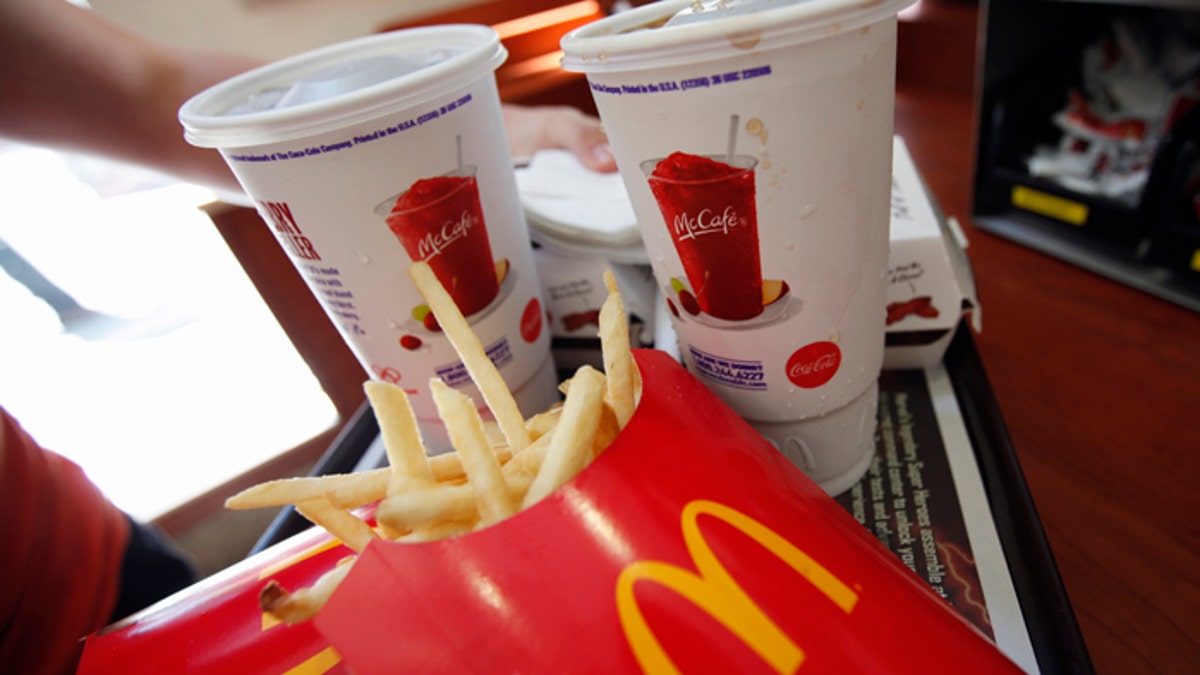
A man holds a tray of food at a McDonald's restaurant in Times Square, New York in this May 31, 2012 file photo. REUTERS/Mike Segar/Files (UNITED STATES - Tags: POLITICS FOOD BUSINESS) - RTR3ASGS (REUTERS/Mike Segar/Files)
Knowing how many calories are in a fast food chain's hamburger may not change people's eating habits, suggests a new study.
New Yorkers exposed to calorie counts on fast food menus for years haven't changed how much or how often they eat at popular fast food restaurants, researchers report in Health Affairs.
"There clearly is a subset of people who see and use this information," said senior author Brian Elbel, of NYU Langone and NYU Wagner Graduate School of Public Service in New York City.
But overall, he and his team couldn't see a difference in behaviors when they looked at the entire population of people visiting fast food restaurants.
Since 2008, New York City restaurants with more than 15 locations have been required to post calorie information on their menus. A similar policy is scheduled to be implemented nationwide by December 2016.
For the new study, the researchers interviewed nearly 8,000 people who were dining in fast food restaurants in New York City in 2008 or 2013-2014, or across the river in New Jersey. They also examined patrons' receipts from Burger King, KFC, McDonald's and Wendy's.
After the 2008 policy was implemented in New York City, the percentage of people who noticed nutrition information, used the information and used it to decrease the number of calories they ate went up. Those effects declined over the following five years, however.
Furthermore, from the beginning to the end of the five-year study, the researchers didn't see large differences in the nutritional content of the food people purchased, either in New Jersey or New York, or in how often people ate at fast food restaurants.
For example, before the menu labeling policy went into place, New Yorkers consumed about 796 calories at every fast-food restaurant visit, compared to 773 calories for Newark residents. In 2013 and 2014, New Yorkers were consuming 803 calories, compared to 857 calories for Newark residents.
Based on past research, Brenna Ellison of the Department of Agriculture and Consumer Economics at the University of Illinois at Urbana-Champaign told Reuters Health she's not surprised the new study didn't find the policy to be effective.
However, Ellison, who wasn't involved with the new study, said research into menu labeling is limited because it can't say what people do during the rest of their day.
"We don't know if they went and exercised later or if they ate a lighter dinner if they had a Big Mac at lunch," she said.
Elbel also told Reuters Health that so far, researchers only looked at fast-food restaurants, and there's no way to know how menu labeling at other types of restaurants may affect people's behaviors.
"We have a lot of data coming out of fast-food restaurants and little coming out on other places," Elbel said.
"I think there is still lots more to do to understand the full impact," he said.
